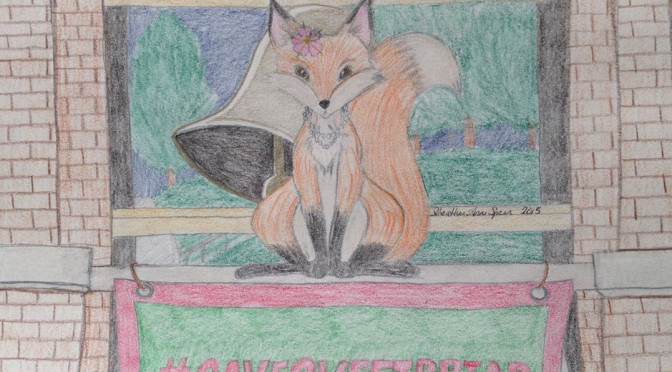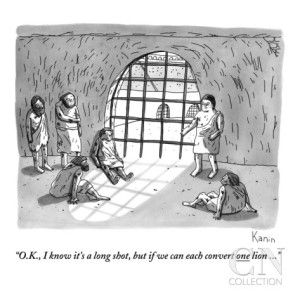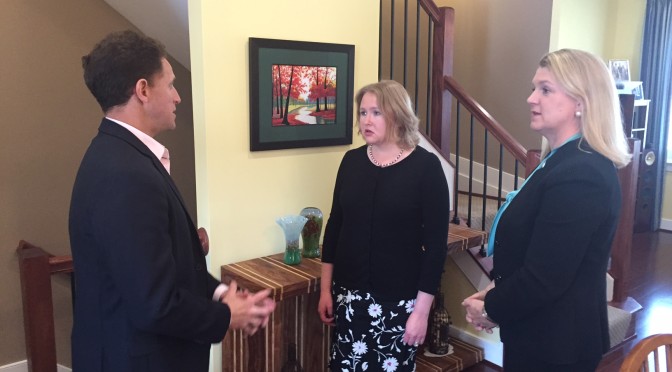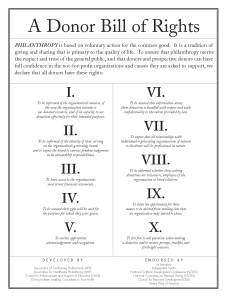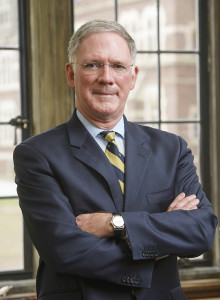It could have been “For Whom the Bell Tolls”, but instead it is “The Bells are Ringing!”
My dear readers have followed the story of my college, Sweet Briar, over the past six months. On March 3, 2015, those who loved Sweet Briar received a terrible shock. The President and Board had voted to close. Shortly thereafter, Saving Sweet Briar, Inc., a nonprofit organization, mobilized to raise funds and launch a legal battle. Thousands rallied around them supporting additional legal suits, fundraisers, events and more — in support of a single goal to keep the College alive and honor the will of the founder. As you are aware by now, the efforts were successful. After a collective gasp and sharp inhale over many months, a slow exhale begins.
On September 2, 2015, Saving Sweet Briar will deliver the final payment as a part of the settlement agreement — on time and with extra. The website says,
“September 2 is a day to celebrate . . . together! At 12 Noon EST, ring a bell if you have one, and let’s show the world our colors—a sea of pink and green! And please share our story of tenacity and determination. WE, the alumnae of Sweet Briar College, have preserved this unique institution of higher education to empower future generations of young women—just as it empowered us.”
In tribute to all who have worked so hard for this effort, I offer a literary tolling of bells with scenes of the Sweet Briar Bell Tower:

Daisy in whose memory the College was established as a “perpetual memorial”.
Indiana Fletcher Williams, Daisy’s mother, whose will established Sweet Briar College.
The Presidents of Sweet Briar College (with one exception whose name will not grace these pages). Some of these Presidents I only knew as the names of some of our dormitories or academic buildings, but I had the pleasure of knowing personally all of the Presidents Since Nenah Fry.:
Philip Stone, 2015-
Jo Ellen Parker, 2009-2014
Elisabeth Showalter Muhlenfeld, President emerita, 1996-2009
Barbara A. Hill, 1990-1996
Menahy Elinor Fry, 1983-1990
Harold B. Whiteman, Jr., 1971-1983
Anne Gary Pannell, 1950-1971
Martha B. Lucas, 1946-1950
Meta Glass, 1925-1946
Emilie Watts McVea, 1916-1925
Mary K. Benedict, 1906-1916

The Board of Directors of Sweet Briar College
A special bell rings for Teresa Tomlinson `87, Esquire, Chair of the Board and one of the most compelling graduation speakers of 2015. I had the pleasure of knowing Teresa as a student at Sweet Briar. I looked up to her as leader of the student government then, and I salute her now!

Saving Sweet Briar if it were not for the brave women of Saving Sweet Briar – and their families – we would not have had the structure to raise funds and reach the successful settlement. These women funded and launched the fight and pointed the way forward. Their torch lit the way.
Jo Ann Soderquist Kramer (Sweet Briar College, AB 1964; University of Virginia, MS Aerospace Engineering 1967)
Sarah Clement, Chair of the Saving Sweet Briar, Inc. Board (Sweet Briar College, AB 1975; University of Virginia School of Law, JD 1984)
Sally Mott Freeman (Sweet Briar College, AB 1976)
Christine Boulware, Secretary of the Saving Sweet Briar, Inc. Board (Sweet Briar College, AB 1977)
Tracy Stuart (Sweet Briar College, AB 1993). Tracy provided the funds to launch the initial legal suit and is putting her love for the College to work as a coach.
Ellen O. Pitera (Sweet Briar College, AB 1993; University of Virginia, MA Teaching 1999)
Brooke Linville (Sweet Briar College, 2000-2002, George Washington University BA 2004). Brooke created the Saving Sweet Briar website and fueled the social media campaign with creative messages and images.
Legal
Legal minds provided the way forward to saving Sweet Briar College. Special bells must ring for:
Ellen Bowyer, County Attorney for Amherst County, Virginia
Elliott J. Schuchardt, Esquire
Troutman Sanders, LLP
White & Case, LLP
Media

Without media attention, the stories raising up the efforts to save Sweet Briar would have been been eclipsed by the constant “implosion” stories. Still, all of the reporters who covered the stories and their news outlets deserve a special tolling of the bells.
Social Media
Without social media, this special college would likely not have been saved. Through Facebook, Twitter, Linked In, Reddit, Instagram, Pinterest, Youtube and beyond, the stories, photos, people and passion of Sweet Briar made its way to the hearts and minds of thousands. Within these platforms, the social networks, conversations and fabric held people together, rallied generosity, raised important issues, researched important issues and held leaders accountable. My “friends” on Facebook doubled after March 3, 2015. My last count of the groups I have been invited to join numbers over 20.

Sweet Briar 2.0 gathered together the many strategic ideas for the future of the College. Hundreds contributed initially through email chains, spreadsheets, Facebook groups and subject matter discussions resulting in a living and breathing website.

The Major Gift Task Force brought together volunteers with fundraising experience (or willingness) to reach out to past major donors of the College and beyond. On the front for saving Sweet Briar, these were the soldiers with whom I spent the majority of my time. Each week we had conference calls under the leadership of Mary Pope Hutson, now a board member. Without official donor lists, we called from spreadsheets, email suggestions and memory. The donors who responded not only were generous, they were very, very patient.

Faculty and Staff of Sweet Briar are the heart of the College. Without superior academics, there would be no College. When you ask any student what the College means to her (or him), you will hear stories about faculty. For me, my English and Psychology professors continue to influence me today such as Susan Beers. I miss those who are no longer alive: Professors Ralph Aiken, Karl Tamburr, Ross Dabney, and David Johnson.

Prayer, the Chapel, the Chaplain and the Chaplain’s House
As a student at Sweet Briar College, I served on the search committee for the new chaplain. My classmate, Kelly Meredith Iacobelli, and a representative group of faculty and staff poured through resumes from around the country. The Reverend Susan Lehman and her husband, John Dalzell, came to Sweet Briar and moved into the Chaplain’s House (now Hubbard House lovingly restored by the Hubbard family). At the Chapel I was confirmed, gave my first sermon and laid a strong spiritual foundation. At the Chaplain’s house, I discussed issues of the day over memorable meals and found solace in the home-like atmosphere. Susan and all of the spiritual leaders of Sweet Briar who came before and after her all deserve the ringing of bells. The prayer of Emily Watts McVea from 1928 inspired me to write this post at reunion, 2015.

“My” Classes and “My” Places
Every person who feels close to an institution owes that bond to the people who share it with them. I am blessed with deep connections through my time as a student, as an employee and as a volunteer over the years. As beautiful as a campus may be, acres and buildings cannot love us back. People can. My classmates of 1988 were there to greet me at Orientation and they are treasured friends today. The classes around me are also very special: 1985, 1986, 1987, 1989, 1990, 1991. It is one’s classmates who primarily weave together the fabric of memory and community. Since I worked at the College, I also got to know well the students of 1993, 1994, 1995, and 1996. Having served as Regional Campaign Director, I made friends around the country with alumnae of all ages in Atlanta, Boston, New York, Baltimore, San Francisco, Charlotte, Chicago, Dallas, Houston and Washington, DC. I rarely travel around the U.S. (or the world) without reaching out to fellow alumnae. This past summer, I enjoyed spending time with alumnae in Paris and London.

The Alumnae of Sweet Briar College deserve the constant tolling of bells given their loyalty and friendship over the years and especially over the past six months. The events around the country, fundraisers and work days at the College are truly inspiring. I’ve written about the incredible efforts by alumnae engagement in this post.

My Sweet Briar Mentors
As I reflect on my career, it is my Sweet Briar mentors who come to mind as shaping the person and colleague I have come to be. As a Freshman, Martha Clement, hired me to be a phonathon caller. Two days a week I took my stack of cards and called alumnae to encourage them to give. Week after week, year after year, this experience shaped me into the fundraiser I am today. Martha believed in me and encouraged me on. Sometimes, she would ask me to come back in the afternoons between official calling nights to make calls to some of her “special people” (ironically, some of those same people are the people I called to save Sweet Briar). Martha would be so proud that her daughter was one of the leaders of Saving Sweet Briar.
At my fifth year reunion, Denise McDonald (now the Vice President for Development at Lynchburg College) and Mitch Moore (now the Vice President of Development for Shenandoah College) encouraged me to come and work for Sweet Briar and the $35 million campaign. The Regional Campaigns Denise taught me to run provided the basis for the next 10 years of my career. Nancy Baldwin read every letter I wrote, critiqued my phone calls and edited my proposals. I am a better writer because of her. Louise Zingaro provided invaluable advice, introductions and friendship. Bradley Hale, Chair of the Atlanta Campaign and Vice Chair of the Board at the time, provided my introduction to the National Cathedral and my career beyond Sweet Briar. Martha Holland, Tracy Savage, Claire Dennison Griffith, Missy Witherow, Michaela English, Allie Stemmons Simon are alumnae who helped guide and shape my work over the years.
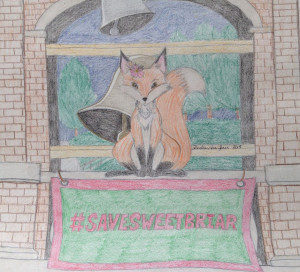
Students
Without students and the families who support them, there would be no College to continue. The students are the living embodiment of all that Sweet Briar represents. Without students to absorb the wisdom of faculty, there would be no degrees. Without students needing sustenance, there would be no dining services. Without students pursuing their dreams, there would be no Admissions Office. Without students, the dorms would be empty. Without students, donors would find no reason to give. Our bells chime the loudest for the students and their families who were willing to return and to choose Sweet Briar College.
If my words could be bells, they would ring for hours (if not days). I do hope to be a bell for Sweet Briar College ringing into the future.

Stacey Sickels Locke, CFRE, is a proud graduate of Sweet Briar College, Class of 1988. She served as an employee of the College in the early 1990s working on the $25 million Campaign. During that time, she solicited many leadership gifts which make up the current endowment. Since then, she has spent her career building support for higher education and the nonprofit community as a staff member and consultant for boards. As a volunteer, she has served Sweet Briar since graduation as a fundraiser, admissions ambassador and now advocate for the #saveSweetBriar movement. She raises funds for Saving Sweet Briar, a charitable organization committed to the future of the College She is a member of the Association of Fundraising Professionals (AFP), is affiliated (through the University of Maryland) with the Council for Advancement and Support of Education (CASE) and holds a Certified Fund Raising Executive (CFRE) certification from CFRE International.
Follow us....
Share this....

